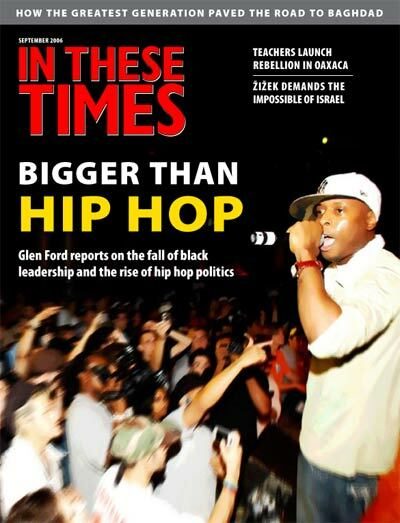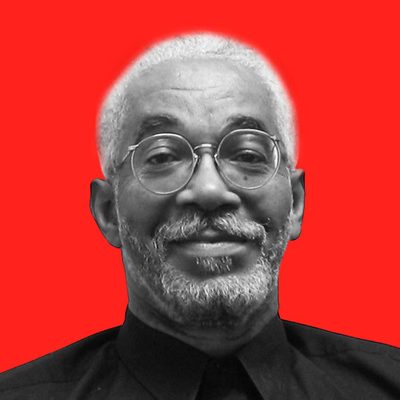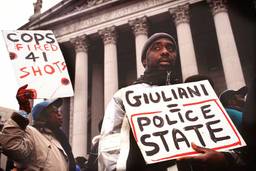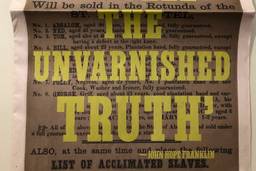The Reparations Bandwagon
Hurricane Katrina opens eyes to the need for reparations to repair the race/class divide.
Salim Muwakkil
The national movement to gain reparations for the descendents of enslaved Africans was a fast-rolling bandwagon until slowed by events of 9/11. Well, it’s accelerating again.
In truth, it’s been picking up momentum since Hurricane Katrina blew the cover off this nation’s well-camouflaged race/class divide. The distress revealed in that storm’s wake moved even President George Bush to urge redress of poverty’s racial disparities. He quickly moved past that urge, but the national conversation continues.
As I see it, the question of reparations for racial slavery and Jim Crow apartheid is one of the nation’s most substantive issues. It’s also one of the most disparaged.
In fact, anything relating to slavery seems to repel white Americans. Whenever someone floats the idea to issue a governmental apology for abetting racial slavery, the notion is quickly condemned. The last official to suggest such a public apology was former Rep. Tony Hall (D-Ohio), who proposed a bill for an official apology in 1998 and again in 2000. Hall was flooded with angry mail and the legislation languished.
Americans must lose this aversion if we want to effectively confront the nation’s widening racial disparities. Slavery’s legacy is the primary instigator of those disparities –though its role is hidden to many Americans.
The reparations model provides a conceptual framework to help clarify the crippling affects of that legacy by taking careful account of the structural and intergenerational dimensions of racial advantage and disadvantage. This approach is not concerned with inducing guilt or moral suasion; it defines slavery in terms of unjust enrichment and racially biased distribution of resources.
Many kinds of capital were systematically diverted from blacks to whites through racial slavery and discrimination for more than 15 generations. This produced a wide racial gap in income and wealth distribution, disparities that were then compounded through many generations.
A comprehensive attempt to redress slavery’s damage resonates with global efforts to compensate history’s victims. Most modern nations now realize that the vagaries of history sometimes produce victims with real injuries: There have been Chilean reparations to the indigenous Mapuche people, Canadian reparations to indigenous Inuits, U.S. reparations to Japanese-American survivors and various Native nations, German reparations to Israel, and more.
The issue is gaining more advocates. Reparations conventions and forums are occurring across the nation.
A group of heavyweight attorneys (including Harvard’s Charles Ogletree and the law firm of the late Johnnie Cochran), formed in 2002 to advocate reparations issues on the judicial front. Several lawsuits are pending and others are anticipated against insurers, railroad corporations and banks seeking reparations for the profits of slavery.
City councils across the country have passed pro-reparations resolutions, including Chicago; Cleveland; Detroit; Washington, D.C.; Baltimore; Los Angeles and Oakland.
Most of these resolutions urge support for a bill annually introduced by Michigan congressman John Conyers that seeks merely to establish a commission to examine slavery’s consequences and recommend remedies.
At least 12 municipalities (including Chicago, which was the first) have passed slavery era disclosure laws, which require businesses to report on any historical connections to the slave trade. Several mainstream institutions, churches and a number of prominent white Americans also have become reparations advocates. In May 2001, for example, the Philadelphia Inquirer published a two-part editorial supporting reparations.
“Slavery and the century of government-sanctioned discrimination that followed were national policies that denied fundamental rights – justice, equality, freedom – to African-Americans. It will take a national effort to answer for that,” the paper argued. It was the first time a major publication had come to such a conclusion.
And just last June, Ken Woodley, the winner of the Society of Professional Journalists’ 2006 George Mason Award, urged American journalists to support a national apology for slavery and reparations during his acceptance speech.Woodley, the crusading editor of Virginia’s Farmville Herald, told the audience that the nation needs “a domestic Marshall Plan” providing blacks with education, healthcare and economic development as a form of reparations.
Most recently, a coalition of student groups, reparations groups, social justice advocates and some elected officials (dubbed the “corporate restitutions movement”) launched a student loan boycott against banks complicit in slavery, including JP Morgan Chase Manhattan Bank, Bank America, FleetBoston Financial Corp., Bank One and Wachovia.
The bandwagon rolls on.
Salim Muwakkil is a senior editor of In These Times and host of “The Salim Muwakkil Show” on radio station WVON-AM in Chicago. Muwakkil was also contributing columnist for both the Chicago Sun-Times (1993 – 1997) and the Chicago Tribune (1998 – 2005). He is also a co-founder of Pacifica News’ network daily “Democracy Now” program and served as an adjunct professor at Northwestern University, University of Illinois, the Art Institute of Chicago and Chicago’s Columbia College.









